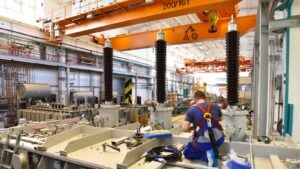Ford is escalating its criticism of sweeping U.S. tariffs, warning that the measures are inflating vehicle costs and endangering factory jobs across North America.
Chief Executive Jim Farley told lawmakers and investors this year that a 25% levy on trade with Canada and Mexico would “blow a hole” in the U.S. auto industry and inject “a lot of cost, a lot of chaos” into a tightly integrated supply base.
In May, Ford suspended its 2025 guidance and said tariffs would reduce adjusted EBIT by about $1.5 billion, with total gross costs up roughly $2.5 billion as import duties hit vehicles and parts.
Executives said they were hunting for offsets but could not yet predict how consumers would respond if sticker prices rise. Analysts have tried to quantify that hit at the showroom.
Wolfe Research estimated the duties would add about $3,000 to the average vehicle and roughly $7,000 to models imported from Canada or Mexico, where many components crisscross borders before final assembly.
Dealers say they would have little choice but to pass on higher costs.
The White House briefly offered a lifeline this spring, signaling temporary relief for vehicles compliant with USMCA content rules.
Automakers including Ford welcomed the pause but warned that the cumulative effects of layered duties. Ford’s broader stance against U.S. protectionism has underscored its concern that trade politics could erode North American competitiveness.
Ford has more insulation than some rivals because most of its U.S. sales are built domestically, yet the company still depends on Canadian and Mexican plants and a global parts network.
That is why, Farley has argued, blanket tariffs risk eroding competitiveness while also clouding hiring and investment decisions.
Ford said the uncertainty alone was enough to pull its forecast while it looks for ways to blunt the impact through logistics workarounds and sourcing changes.
Tariffs are charged at the border and flow through to factories, suppliers, and dealers before landing in monthly payments.
As Reuters reported, industry modeling suggests the policy effectively functions like a tax on some of America’s best-selling vehicles, especially full-size pickups that often rely on cross-border parts.
That dynamic is why even a temporary pause on USMCA-compliant models did not end concerns about inflation.
Ford has said tariff-driven costs could force it to delay or re-sequence projects, a step that can ripple into job timing at assembly plants and suppliers.
The company has also warned that removing federal EV incentives would compound the pressure on U.S. manufacturing, a message Farley delivered in February while lobbying Congress.
In early October, officials and industry allies said the administration was weighing targeted tariff relief meant to encourage U.S. assembly and engine production.
Automaker shares rallied on the prospect, though no final decision has been announced.
The possibility of exemptions underscores how much is at stake for companies that plan capital spending over multiyear cycles and need stable rules to justify factory expansions.
For now, buyers face higher odds of paying more, and companies face lower odds of investing as aggressively as they otherwise would.
That is the core of Ford’s warning. In a business that runs on scale, even modest, persistent cost increases can push prices up, temper demand, and chip away at the jobs those sales support.




















